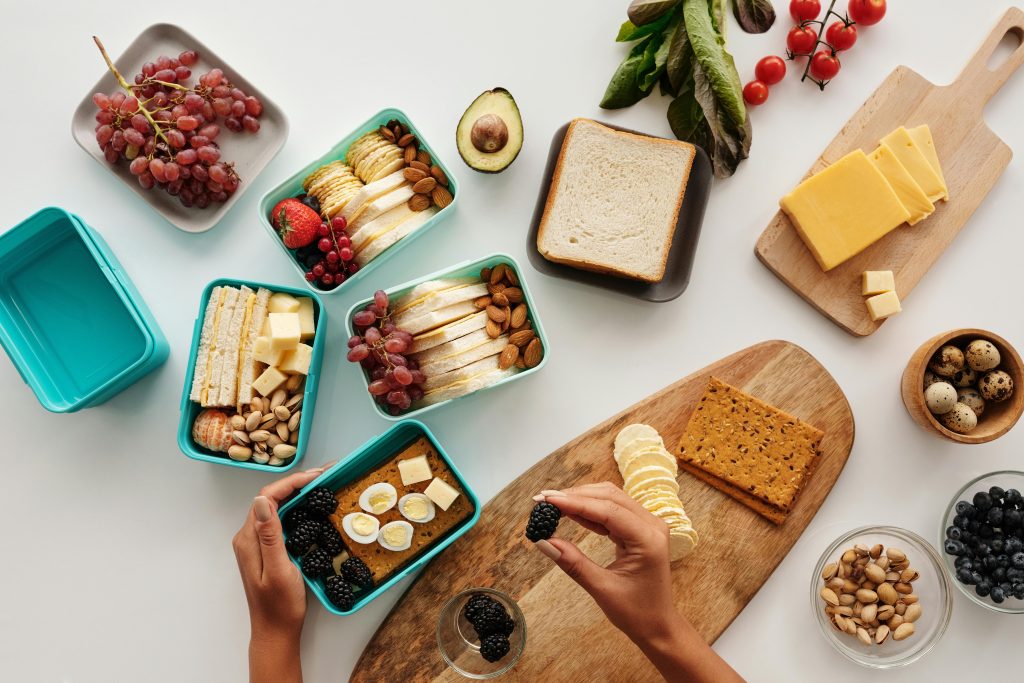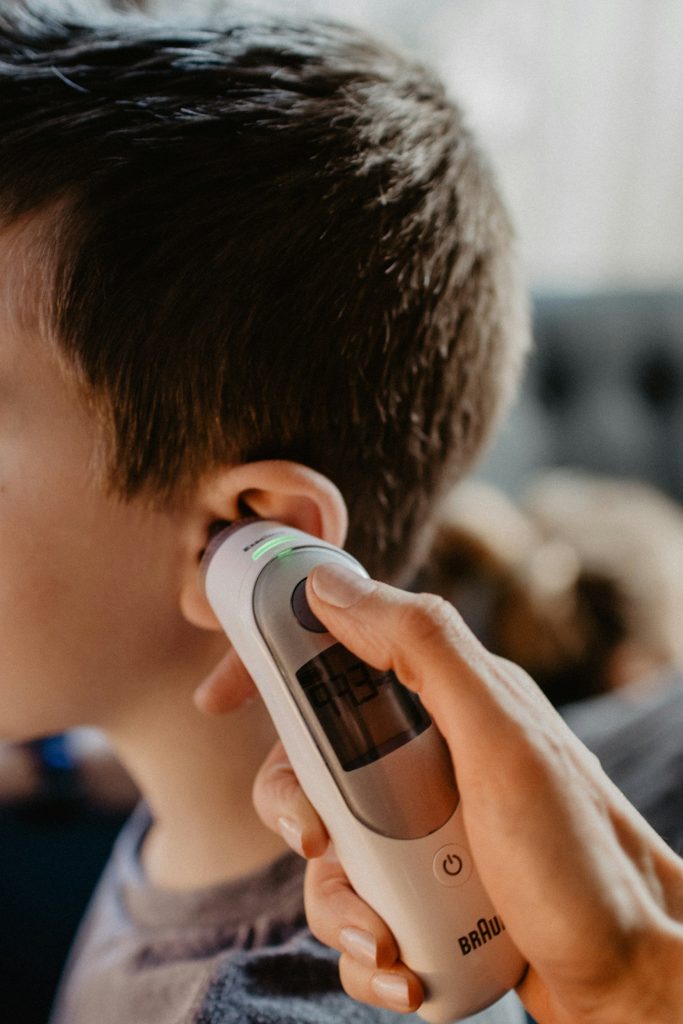Written By Eliy Lirange, Student Volunteer & Soleina Karamali, RD
In our last blog post we discussed some of the reasons that picky eating crops up in the toddler years. Our first tip in the Preventing Picky Eating series focuses on the power of food play. Read on to learn why this is an important component to picky eating prevention.
Eating involves all 8 senses…
Although eating is an innate action, it is much more complex than we typically make it out to be. Eating compiles not just 5, but 8 senses! Children use these 8 senses to gain the willingness to try new foods. They choose foods based on sight/presentation, smell, feeling/texture, sound, and of course, taste. However, there are three more senses that are not as well known that are also incorporated when eating: vestibular, proprioception, and interoception senses (1).
- Vestibular: The feeling of balance and the space that one occupies. When a child is fully balanced at the table (sitting without their feet hanging and with adequate support) they are more inclined to try foods or eat a meal in general.
- Proprioception: The communication between our mind and body allowing us to move or do the physical act of eating (chewing and moving food around in the mouth).
- Interoception: The way our body feels inside. In regards to eating, interoception includes hunger and fullness cues. An infant is less likely to try food when their interoception sense is telling them they are full.
Eating is one of the only milestones that takes into consideration all 8 of these senses. Learning to connect these 8 senses is part of learning how to eat. Some infants may be more sensitive in certain areas such as smell or touch, and this may lead to hesitancy when exploring foods. Others may be a bit more sensitive to the taste of foods and prefer blander flavours initially. Every child develops and coordinates these senses at a different pace. Just as there is a spectrum of normal within the timeline of walking or talking, there is a spectrum to how quickly a child is able to coordinate these senses and eat.
The task of connecting these 8 senses can also occur at the same time that an infant may be testing their sense of control and say no to foods while exploring their autonomy. You can imagine that if these milestones happen at the same time, you could easily have a picky eater on your hands!
How does food play help if I have a picky eater?
If a child is a fussy eater, there are some steps that might help encourage the child to try foods or even be more comfortable around the foods. Playing with food is one method of food exposure that empowers children to try new foods without pressuring them (2).
Incorporating real food into children’s play familiarizes children with a variety of foods that they are unwilling to eat. Sensory activities with food components allow the child to touch, smell, see, and maybe taste the food in an environment they are comfortable in! While tasting food may be the long-term goal, the idea of food play is to provide a low pressure setting for children to explore. If the child tastes the food they are playing with, that is great! However, it should not be the immediate expectation when playing with food.
Depending on your child’s comfort to the table, food play may be done at or away from the table. In many cases, incorporating fun activities with food at a meal can make mealtimes positive and enjoyable for toddlers. However, if your child perceives the table as a negative space, food play may be something that might not be feasible for them. In this case, try to incorporate food play into their regular play schedules.
Food play ideas:
If you have a child that is comfortable at the table, try these ideas at your next meal:
- Sorting foods into the same colours.
- Using pudding, peanut butter, sauces, condiments, and jam to draw
- Create a dinosaur scene. Coconut for grass, broccoli and mushrooms for trees, raisins for dirt, etc.
- Adding faces to meals using berries or olives. Engage your toddler by finding all the parts of the face.
- Dipping foods into sauces or dressings e.g. Can the carrot jump into the pool of ranch dressing?
Here are some ideas for food play away from mealtimes:
- Using fruits and vegetables with paint as stamps for pictures.
- Digging through dried rice, lentils, dried pasta or dried beans to find toys.
- Use fruit to design a picture e.g. use strawberries as petals for flowers or black beans for ants.
- Empty a soft food into a ziplock bag and allow the child to feel it when the bag is sealed. Try pureed pumpkin, cornstarch with water, or fruit puree.
- Mix chia seeds with water and some food colouring for an edible slime. Try this in the bathtub to avoid a huge mess!
- Mix cocoa powder with a bit of water to create “dirt”. Let your child drive their trucks through the dirt and then fill a bin with water to create a “car wash”.
When to seek help…
Food play is a wonderful activity that parents can engage in with their child at any stage of the solid feeding journey. While most kids enjoy food play, there are a few kids that may be more sensitive to foods and may benefit from additional support. If you’re finding it hard to engage your child in food play or if you have further concerns about your child’s nutrition/feeding, feel free to book a Free Discovery Call with one of our therapists.
References:
- Kimball K. Picky eating solutions using all 8 senses (from a feeding expert) [Internet]. 2019 [cited 2024 Aug 1]. Available from: https://kidscookrealfood.com/picky-eater-8-senses/?cookieUUID=6ef665dd-ba1e-497c-9b1f-4000c6ede858&affiliate=0
- Benjamin Neelon, Sara E., and Margaret E. Briley. “Position of the American Dietetic Association: Benchmarks for Nutrition in Child Care.” Journal of the American Dietetic Association, vol. 111, no. 4, 2011, pp. 607-615, https://doi.org/10.1016/j.jada.2011.02.016.



